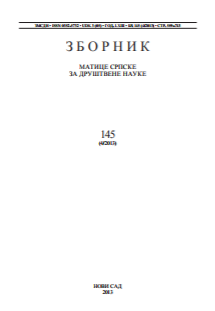АФЕКТИВНО ВЕЗИВАЊЕ ДЕЛИНКВЕНТНИХ АДОЛЕСЦЕНАТА
ATTACHMENT BONDING OF DELINQUENT ADOLESCENTS
Author(s): Sandra ČačićSubject(s): Social psychology and group interaction, Social development, Family and social welfare, Sociology of Education
Published by: Матица српска
Keywords: attachment type or style attachment; attachment dimension; delinquency; adolescence; delinquent;
Summary/Abstract: Main objective of this research is to define adolescence bonding as well as to identify their typical bonding type. The bonding was observed in two ways. The analysis was based on seven attachment dimensions that were defined by N. Hanak, as well as on the basis of Bartholomew’s four-style attachment model. The research was conducted at multiple sites: two secondary schools in Sombor, the Juvenile Correctional Institution in Kruševac and the Juvenile Correctional Facility in Niš. It included 524 persons, 421 adolescents and 103 delinquents. Adolescents are the second and the third grade students of the Secondary Technical School and the Secondary School of Economics, while delinquents were testable juveniles. All of them are under correctional measures in the above mentioned institutions. All results are in accordance with the theoretical expectations. Delinquents attach in insecure way more frequently: 68, 9% delinquents from our sample showed insecure attachment. The fearful type of attachment appears to be typical of delinquents. Delinquents are facing difficulties in obtaining support of close persons, as well as in using significant persons they are related to as safe harbours in stressful situations. In addition, they would see themselves as not worthy of attention and love. There is a high level of painful feelings related to childhood and family, as well as ambivalent and negative current family relations.
Journal: Зборник Матице српске за друштвене науке
- Issue Year: 2013
- Issue No: 145
- Page Range: 623-633
- Page Count: 11
- Language: Serbian

